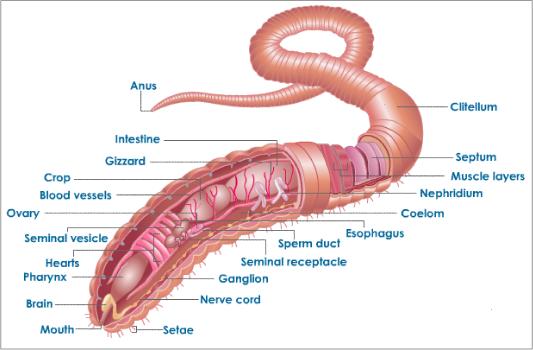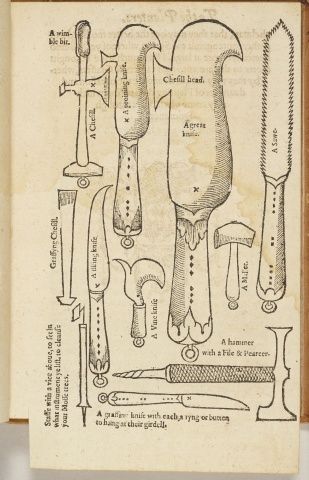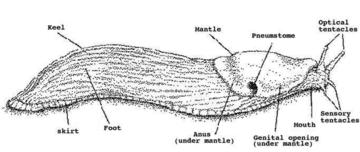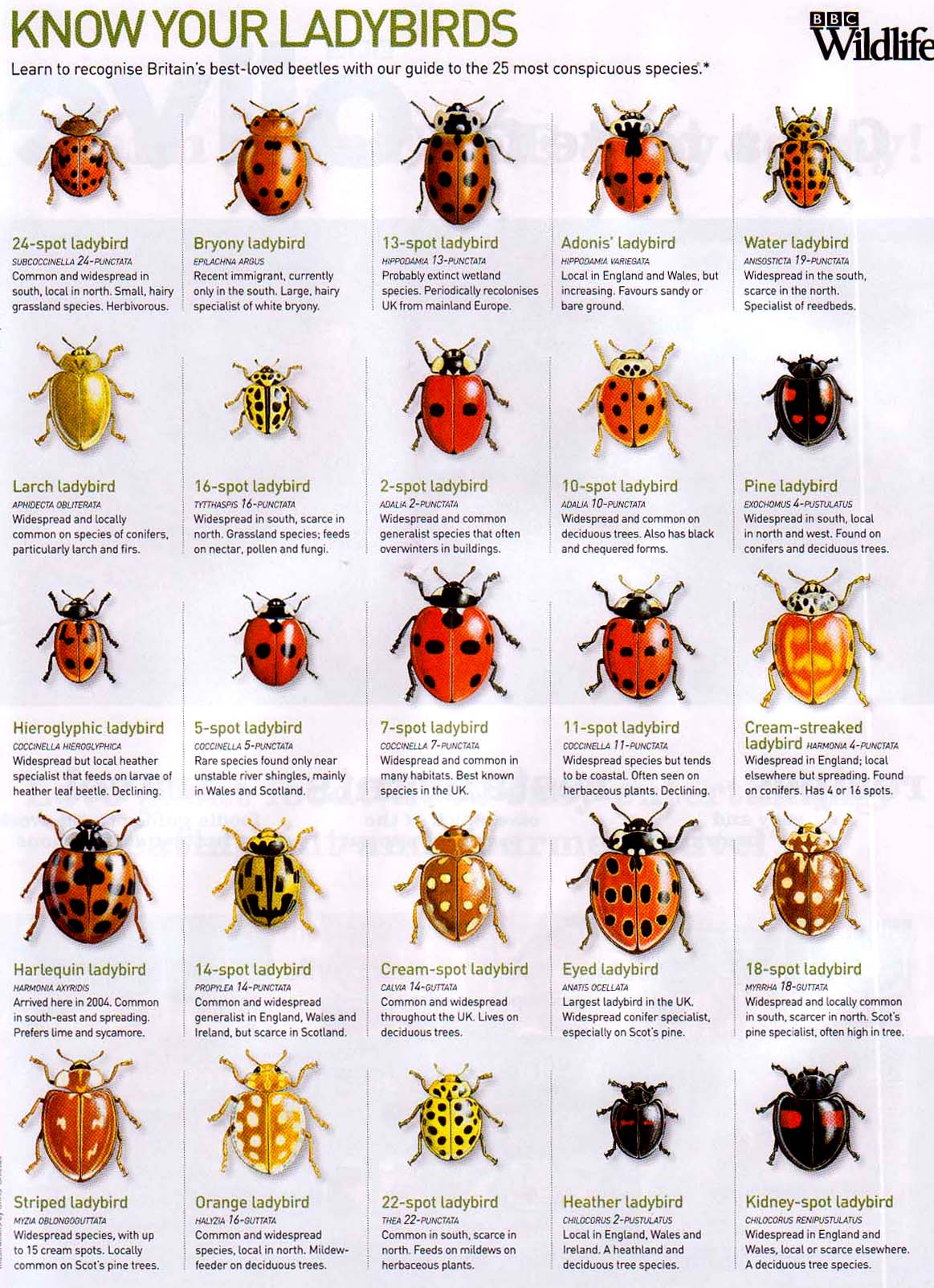There has been much old wives’ lore spoken, handed down and written about over the years concerning gardens and gardening. We have selected a few snippets for your enjoyment. We have tried some of the following and in many cases have had considerable success. Some, we feel, should be taken less seriously than others and we are sure you will be able to differentiate. We will let you to try them for yourselves and evaluate their worthiness.
Planting
Bury unwanted babies of maidens of the town beneath your vines to encourage growth. It stems from the practise of using dripping or fat under your roses – a sure fire success. We can only recommend the latter.
Use scrapings of topsoil from under pines and spruces when planting your strawberries and then mulch with pine or spruce needles, crushed pine cones and twigs – it improves the flavour.
When it is absolutely necessary to transplant something out of season and it is very cold then puddle them in using hot water.
Cabbages
Twist a spiral of narrow tinfoil around the roots of young cabbage plants to inhibit the larvae of the cabbage root fly.
Lay a piece of creosoted string or a narrow ring of creosoted felt 4” away from and around the plant to repel attack.
Bury a piece of rhubarb in the row when planting cabbage to protect it from club root.
To keep cabbage heads from splitting, give each young plant a half-twist in the ground.
Cabbages planted around with sage thyme or rosemary do well.
Crumble mothballs and mix them with the soil to protect against carrot fly or lay a length of tarred or creosoted string between rows allowing 2” from the plants.
Plant corn when the oak leaves are the size of a squirrel’s ear and when planting corn, be generous. “One for the woodchuck, one for the crow, one for the slug, and one for me.”
Plant peas on St. Patrick’s Day for the blessing of the saint himself on your entire garden.
Plant beans when the elms leaves are as big as a penny – if you find an elm obviously, or plant beans on Good Friday.
When you see growth on green ash, grapes and oaks, it is safe to plant tender vines, annuals and perennials.
When it comes to sowing seeds gardening lore has many variations about how thickly to sow, but they add up to the same advice.
Plant your seeds in a row,
One for the pheasant, one for the crow,
One to rot and one to grow.
Or
Sow seeds generously
One for the rook, one for the crow,
One to die and one to grow.
In short plant on the generous side. Between predators and natural failure they are not all going to germinate satisfactorily.
Pests and Disease
Wild cats will, apparently, flee from the smoke of rue and bitter almonds.
Ordinary domestic cats are discouraged by the judicious use of a bicycle inner tube – they apparently believe it to be a snake and give a wide berth.
Rather than the expense of a fruit cage simply wind black cotton around the branches of your fruit trees as birds will avoid areas strung thus – they cannot judge the distances of these threads against the sky and fear getting entangled if they have to take off in a hurry.
Moles will be deterred by small lumps of acetylene fuel placed by their runs. Garlic is said to have a similar effect as is the growing of caper spurge (that’s Euphorbia to you and I). We cannot recommend growing Euphorbia all over your plot.
Spraying your sprouts and cabbages with methylated spirits will prevent mildew.
To avoid leaf curl on your peach tree simply hang mothballs or other moth deterrents but please be aware you may have to explain yourselve to visitors.
Sprinkle plants with wood ashes to keep the bugs off.
Judicious use of horsehair ropes will control slugs (they don’t like to crawl over it). Simply (if finding a horsehair rope could ever be described as simple) surround the area you wish to control.
Weeds
If you heavily sow turnip seed over an area of couch grass it will kill off the couch grass. You will not get very large turnips sowing so heavily. Tomatoes and lupins apparently have a similar effect so perhaps a mix is in order – check companion planting!
Ground ivy, horsetail and ground elder can be brought to bear by excessive planting of marigolds.
Harvesting fleshy perennial weeds just before they flower and laying them as a mulch over the top of the roots will discourage them from growing.
Herbs
Grow a few herbs outside the herb garden as many plants classified as herbs contain natural chemicals that either encourage growth in other plants or protect them against pests and disease.
Borage helps strawberries thrive.
Pot marigolds secrete an insect repellent that protects many surrounding plants.
Parsley encourages bees and protects asparagus, beans and carrots.
That’s why in the old cottage garden you would find plants, herbs or flowers all over the place.
The Weather
If you want to know when to sow, take your trousers off and sit on the ground!
This is a favourite old wives tale and another one that is senseless at first sight. All it meant was that before they had clever ways of measuring soil temperature, was that feeling the bare soil with tender flesh was a good – if uncomfortable – way of finding out if it was warm enough to start the spring planting. In later times it was changed to using your elbow.
Oak before ash, we are in for a splash,
Ash before oak we are in for a soak.
Or put it another way which ever tree comes into leaf first you are going to get wet.
If the first of July be rainy weather,
It will rain for four weeks together.
If you escape the 1st of July, 15th July lies in wait…
St Swithens day if thou dost rain,
for forty days it will remain.
In other words until August 24th.
Marigolds
Although much rarer today there was a time when all cottage gardens had marigolds everywhere.
Most garden pests hate marigolds because of the excretion from their roots-and the warning given off by their aroma-which kills eel worm and various other baddies in the soil.
French, African and Mexican marigolds all perform this service and the last is even recommend for controlling ground elder.
All vegetables and flowers like them nearby-potatoes, tomatoes, peas, brassicas and roses seem to particularly benefit.
Foxgloves
They stimulate the growth of plants around it and help keep disease at bay. Rhododendrons and azaleas are said to particularly to thrive when foxgloves are grown among them, and there is evidence to support this.
Unusual Things to Help Plants Grow.
Banana skins – Roses love it if you dig in old banana skins just beneath the surface of the soil around the roots. The skins contain a load of goodies-phosphates, calcium, sulphur and magnesium-which many soils are deficient.
Lard-If you are putting in new roses bury a good wedge of cooking lard beneath the roots. They say that the roses will show their appreciation when they bloom.
Beer– Most vegetables appreciate a drop now and again, but it is brassicas that like a drop the most. Cabbages like to have a regular drink about once a week. It is an excellent food for flowers as well, especially the tall ones such as delphiniums and hollyhocks.
Milk – When the milk container is empty fill it with water and shake it up well. You then get a mild liquid manure that is good for house plants or climbing plants growing on the outside of your house.
Tea leaves – Used tea leaves are a good addition to the compost heap at all times but rhododendrons and camelias respond well to them as a mulch. Cold tea is just as good. So, whatever you have left is better on them than tipping it down the sink.
Nettles– No garden should be without nettles!! They take and store nutrients from the soil retaining …nitrogen, phosphate, iron, protein and silica. If you use nettles as a fertiliser you will be returning all this goodness back to the soil.
Making nettle fertiliser
Fill a container with rain water and let the nettles you have pulled or cut soak for 1 month.
Then dilute what remains with more rain water in a ratio of 1:10 and use as a liquid manure to be poured around the roots.
Or you can soak the nettles for only a few days and use the water as a spray against aphids.
Manure – If you have some manure but not enough to do your whole plot a power of good, make some liquid manure. Fill an old sack with the manure and hang it in a barrel of water for three or four days. The liquid can then be fed to your plants in a watering can.
Potash (bonfire ash) – If you have a bonfire, the ash from the burnt garden waste is a good substitute for animal manure. Make sure there are no chemicals or plastics on the fire. If you haven’t you can put it in the compost heap and let it rot down with all the other things in it.
Roots of beans and peas -When you have used all your peas and beans and all the leaves and roots are dying, dig them into the ground as they have loads of food for next year.
And More….
It is said that some vegetables, including parsnips, taste better after a frost – absolutely true, because they break down the starches they contain to protect themselves from the cold and those starches are converted into sugar, hense the improved flavour. Cold on your Brussels Sprouts reduce the bitter compounds in the crop which makes them taste sweeter.
There were 130 different names given to just 46 varieties of pea before the RHS rationalised its plant nomenclature.
Your compost is ‘hot’ because the microorganisms breaking down the carbon-rich organic materials in your heap generate heat by releasing enzymes. It’s the same principle as the energy release of burning wood in a fire, just a bit slower.
A balanced and potentially useful fertiliser that contains nitrogen, phosphorus and potassium is pee. Urine has 11g, 1g and 2.5g respectively in a single pee. If using on your compost the extra nitrogen, and to a lesser extent the potassium, should enhance the rotting process and the phosphorus would enrich the nutrient content. Please be discrete.
The Old Lawnmower Club was set up in 1990. For those of you interested in finding out more: https://www.oldlawnmowerclub.co.uk/
An earthworm produces 11 times more potassium from soil than it ingests from it and they can digest 36 tonnes of soil in a year! An acre of soil can hold more than a million earthworms.

In harder times people would peel their potatoes and plant the peel. The peel retains the eyes that will grow into new plants. In the war people were actively encouraged to halve or quarter their seed potato to extend the crop.
Globe artichokes are not related to Jerusalem artichokes in any way.
The French aristocrat Bertrand de Moleville invented the secateurs in 1818 for trimming in vineyards and orchards.
Jan van den Heide invented the standard garden leather hose in 1672 and its design remained unchanged under the mid 19th century when Henry Bewley started to use gutta percha (a natural material similar to Malaysian rubber).
Some 16th Century Tools

George Acland made the first jute twine in Dundee, Scotland in 1828.
The first gardening tools however were made around 40,000 years ago and made from animal bones. Mattocks were made from sheep horns tied to sticks, dibbers constructed from mammoth ribs and shovels made from the shoulder blades of oxen.
When two Englishmen meet, their first talk is of the weather. Samuel Johnson
Just in case you ever wondered which ones to look out for – Rain Clouds

And the person you have to thank for it is Luke Howard, a British amateur meteorologist, who invented the sytem in 1803 in his essay ‘On the Modifications of clouds and the principles of their production, suspension and destruction’, first published in the Philosophical Magazine.
A falling rain drop can travel as fast as 18mph.
Since Records Began…. 1860 to be precice and the man responsible was George James Symons who founded the British Rainfall Organisation.
The word gazebo comes from the Victorian expression gaze-about.
Lightning is five times hotter than the surface of the sun and the odds of being sruck are roughly 1 in 3,000,000,000.
The average number of people on a waiting list for an allotment in the UK is 59. Half of local authorities in the country report lists of more than 200 names. About 4,300 people are waiting for an allotment in London alone.
By tradition, the rent for British allotments is due on St Michaelmas Day, 29 September. Ours is 1st January.
Allotments in the UK date back to the 18th century. By 1873, there were 244,268 allotments in Britain; by 1918, 1.5 million. The number then declined, falling to 600,000 by the late 1960s. Today, there are an estimated 300,000 allotments, yielding about 215,000 tons of fresh produce every year.
Famous fictional allotment holders include Arthur from EastEnders, who died among his spuds and caulis. The actor Charles Dance and, less surprisingly, Alan Titchmarsh are allotment gardeners.
The National Society of Allotment and Leisure Gardeners is the UK’s biggest allotment body. A recent issue of its quarterly magazine, Allotment and Leisure Gardener, includes news of the Third Dunblane Potato Day and an ad for “probably the greatest rotavators on earth” (the BCS and the Camon). And yes we are members.
In the UK, the size of allotment plots is measured in “rods”. One rod equals 25.29 square metres.
Allotments thrive on rules. For example, Greenwich council requires that pathways should be 47.27cm wide. Waltham Forest council bans bonfires on its allotments. Far more approachable here in Rugby.
The Luxembourg-based Office International du Coin de Terre et des Jardins Familiaux is Europe’s largest body representing allotment gardeners (it claims to have three million members). We are reliably informed tickets for this year’s International Allotment Gardeners’ Congress in Krakow, Poland, are selling fast.
To forget how to tend the earth and dig the soil is to forget ourselves. Mahatma Gandhi
The well-known Greek philosopher Theophrastus was the first to systematically classify plants, beating the more well-known Carl Linnaeus by several centuries. He was the first to classify roses and established what is considered the first botanic garden in Lyceum in 300BC.
The soil fist test. Take a handful of slightly moist soil and crush it in your hand. If it keeps the impressions of your fingers its clay, if it crumbles immediately its sand and if it holds its shape briefly and then crumbles into small chunks its loam.
The life of a vegetable seed. Open pollinated seeds can be saved, dried and germinated, just don’t forget to label them. The life span varies. Onion, parsnip and sweetcorn will last for one to two years. Beans, leek, parsley, pea and pepper for three years. Beetroot, carrot, pumpkin and tomatoes four years. A whopping five years for broccoli, brussels sprouts, cabbage, cauliflower, Chinese cabbage, lettuce, melon, radish and turnip but topping the lot are celery, cucumber and marrow which will last up to six years.
The love of gardening is a seed once sown that never dies. Gertrude Jekyll
Know the enemy.

Our Garden Saints. (just in case you want to know who’s looking out for you, or who to blame).
Adelard – gardeners.
Antonio de Padua – small lost things.
Fiacre – herbs, vegetable gardens and male gardeners.
Patrick – organic gardeners.
Werenfried – vegetable gardens.
84,000 people went to an A&E department because of a garden related injury in 1998. (if anyone knows a more recent or allotment biased figure do let us know).
140 degrees Fahrenheit is the temperature a compost heap must reach for six weeks to kill off any weeds, pests or pathogens.
The garden that is finished is dead. HE Bates
Old Gardeners never die, they just spade away.

Garden-Lore
EVERY child who has gardening tools,
Should learn by heart these gardening rules.
He who owns a gardening spade,
Should be able to dig the depth of its blade.
He who owns a gardening hoe,
Must be sure how he means his strokes to go.
But he who owns a gardening fork,
May make it do all the other tools’ work.
Though to shift, or to pot, or annex what you can,
A trowel’s the tool for child, woman, or man.
’Twas a bird that sits in the medlar-tree,
Who sang these gardening saws to me.
The Little Gardener’s Alphabet of Proverbs
AUTUMN-SOWN annuals flower soonest and strongest
What you sow in the spring, sow often and thin.
BULBS bought early are best chosen.
If you wish your tulips to wake up gay,
They must all be in bed by Lord Mayor’s Day.
“Cut my leaves this year, and you won’t cut my flowers next year,” said the Daffodil to Tabitha Tidy.
CUT a rose for your neighbour, and it will tell two buds to blossom for you.
DON’T let me forget to pray for travellers when I thank Heaven I’m content to stay in my own garden. It is furnished from the ends of the earth.
ENOUGH comes out of anybody’s old garden in autumn, to stock a new one for somebody else. But you want sympathy on one side and sense on the other, and they are rarer than most perennials.
FLOWERS are like gentlemen—“Best everywhere.”[a]
GIVE Mother Earth plenty of food, and she’ll give you plenty of flowers.
HE who can keep what he gets, and multiply what he has got, should always buy the best kinds; and he who can do neither should buy none.
IF nothing else accounts for it, ten to one there’s a worm in the pot.
JOBBING gardeners are sometimes neat, and if they leave their rubbish behind them, the hepaticas may turn up again.
KNOWN sorts before new sorts, if your list has limits.
LEAVE a bit behind you—for conscience’s sake—if it’s only Polypodium Vulgaris.
MISCHIEF shows in the leaves, but lies at the root.
NORTH borders are warmest in winter.
OLD women’s window-plants have guardian angels.
PUSSY cats have nine lives and some pot-plants have more; but both do die of neglect.
QUAINT, gay, sweet, and good for nosegays, is good enough for my garden.
RUBBISH is rubbish when it lies about—compost when it’s all of a heap—and food for flowers when it’s dug in.
SOW thick, and you’ll have to thin; but sow peas as thick as you please.
TREE-LEAVES in the garden, and tea-leaves in the parlour, are good for mulching.
“USEFUL if ugly,” as the toad said to the lily when he ate the grubs.
VERY little will keep Jack Frost out—before he gets in.
WATER your rose with a slop-pail when it’s in bud, and you’ll be asked the name of it when it’s in flower.
XERANTHEMUM, Rhodanthe, Helichrysum, white yellow, purple, and red.
Grow us, cut us, tie us, and bang us with drooping head.
Good Christians all, find a nook for us, for we bloom for the Church and the Dead.
YOU may find more heart’s-ease in your garden than grows in the pansy-bed.
ZINNIA elegans flore-pleno is a showy annual, and there’s a coloured picture in the catalogue; but—like many other portraits—it’s a favourable likeness.
[a] “Clowns are best in their own company, but gentlemen are best everywhere.”—Old Proverb.
